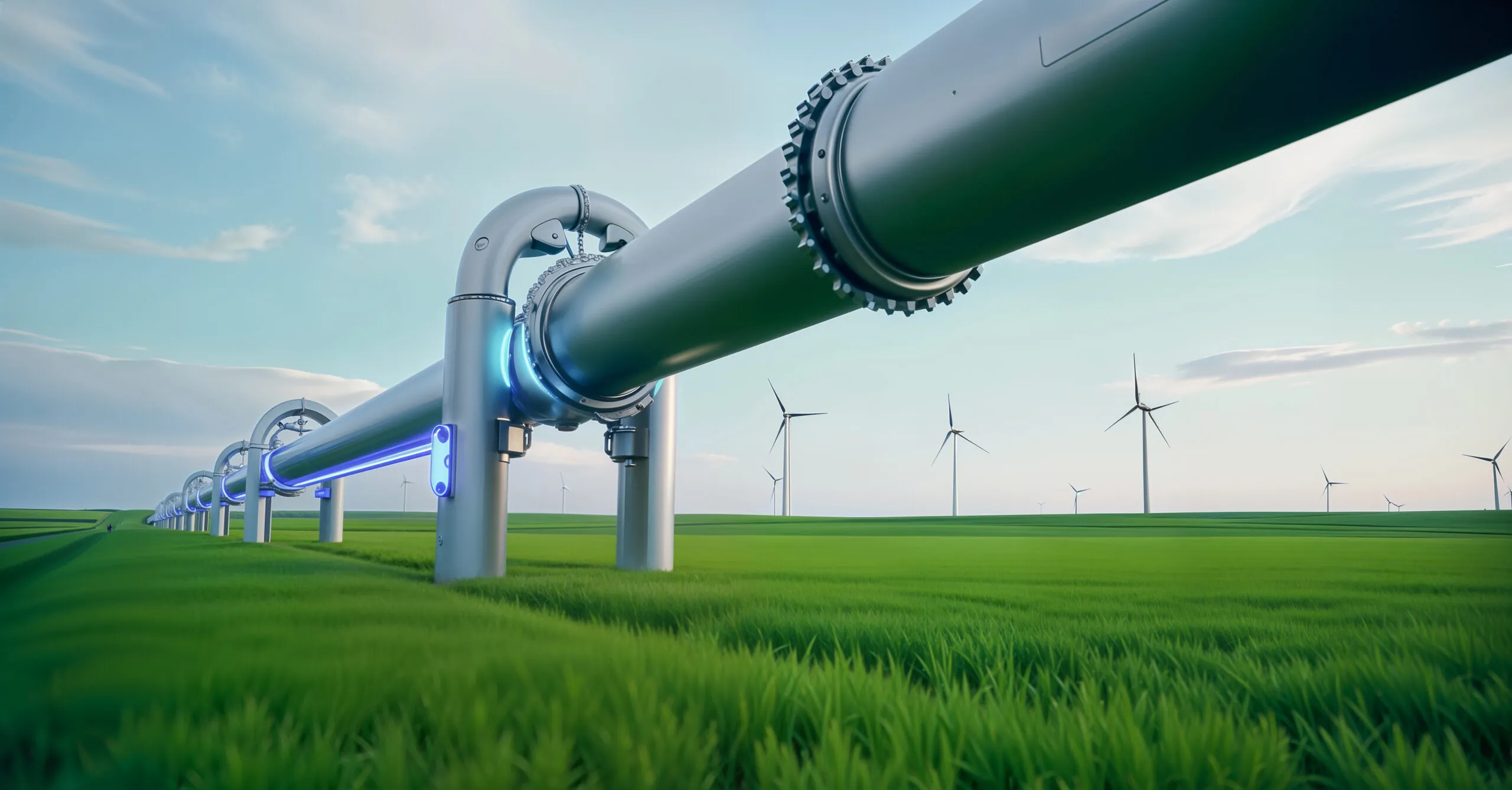Midstream operations, which involve transportation, storage, and wholesale marketing of oil, gas, and refined products, are a critical part of the energy industry. Regulatory compliance in midstream operations is essential to ensure safety, environmental protection, and the fair functioning of energy markets. The regulatory framework governing midstream operations is complex, involving federal, state, and local regulations that vary depending on region.
Let us look deeper into what this regulatory compliance is actually about.
What is Midstream Regulatory Compliance?
Midstream regulatory compliance refers to adhering to laws, regulations, and standards that govern the activities involved in the midstream sector of the energy industry. It is about ensuring that companies involved in the transportation and storage of oil and gas abide by a range of safety, environmental, and market-related regulations. These rules are designed to protect public safety, minimize environmental risks, and promote fair practices within the industry.
The key aspects of this compliance are:
- Safety Standards: Midstream companies are required to follow regulations that ensure safe transportation and storage of hazardous materials like oil and gas.
- Environmental Protection: This is a significant component of midstream compliance aimed at minimizing the impact of midstream operations on air, water, and land.
- Operational Reporting and Transparency: Midstream companies often need to report to regulatory agencies on operational details, such as pipeline capacities, safety inspections, and maintenance activities.
Moving on, let us gain an insight into these regulatory authorities.
Key Federal Regulations Governing the Midstream Sector
Here’s an overview of the key regulations you should know regarding midstream regulatory compliance.
Pipeline and Hazardous Materials Safety Administration (PHMSA)
In the United States, PHMSA regulates the nation’s pipeline transportation system, focusing on proactive measures to safeguard public safety and protect the environment from the hazards of transporting hazardous materials.
In the case of gas processing plants, it focuses on these crucial rules to maintain safety:
- 49 CFR Part 192: This governs the transportation of natural gas by pipeline, covering pipeline construction, operation, and maintenance standards.
- 49 CFR Part 195: This governs the transportation of hazardous liquids (e.g., crude oil, refined products) by pipeline, outlining safety standards for construction, operation, and maintenance.
PHMSA outlines its role in overseeing the nation’s pipeline transportation system, prioritizing preventive measures to protect both people and the environment from the risks associated with hazardous materials transport.
Federal Energy Regulatory Commission (FERC)
FERC oversees the interstate transportation of natural gas, oil, and electricity.
Midstream companies operating pipelines that cross state lines must comply with FERC regulations, including:
- Rate-setting: FERC has the authority to approve or modify tariffs that midstream companies charge for transportation services.
- Certifications: Midstream operators must obtain FERC approval for certain infrastructure projects, such as new pipelines or expansions of existing systems.
- Market Transparency: FERC enforces rules to ensure that transportation rates and services are fair and that information regarding pipeline capacity is publicly available.
FERC plays a critical role in overseeing the regulation of energy markets, ensuring the reliability and security of energy infrastructure, and protecting consumers from unfair practices.
Furthermore, FERC’s task is to ensure efficient and reliable electricity, natural gas, and oil transmission across interstate lines.
Environmental Protection Agency (EPA)
EPA is a U.S. federal agency responsible for protecting human health and the environment.
EPA is responsible for setting and enforcing environmental standards to protect human health and the environment from pollution and hazardous substances.
The agency enforces environmental laws such as:
- Clean Water Act (CWA) requires permits for discharging pollutants into U.S. waters, including runoff from pipeline spills or leaks. It also mandates the protection of wetlands and water bodies affected by midstream infrastructure.
- Clean Air Act (CAA): This regulates emissions of pollutants that affect air quality. Midstream operations must comply with air emissions standards, especially those related to compressor stations and processing plants.
Moreover, EPA is dedicated to safeguarding public health and the environment by regulating pollution, enforcing environmental laws, and promoting sustainable practices.
Occupational Safety and Health Administration (OSHA)
OSHA is a division of the U.S. Department of Labor, which has the primary mission to ensure the safety and health of workers in the workplace. OSHA regulations protect workers from the inherent dangers of midstream operations, such as exposure to hazardous materials, dangerous machinery, and other operational risks.
It focuses on the following key rules:
- 29 CFR Part 1910: includes general industry standards for pipeline operators, covering workplace safety issues such as hazard communication, personal protective equipment (PPE), and emergency measures.
- 29 CFR Part 1926 sets construction standards for pipelines, including worker safety during the construction and maintenance of pipeline infrastructure.
As mentioned, OSHA plays a vital role in regulating workplace safety standards, conducting inspections, and ensuring that employers provide their workers with a safe and healthy environment.
State and Local Regulations
In addition to federal regulations, midstream operators must comply with state and local laws and regulations, which can vary significantly, as mentioned below.
- State Public Utility Commissions (PUCs): These state agencies regulate intrastate pipelines and related facilities, such as natural gas storage and distribution systems.
- Land Use and Zoning Regulations: Local governments have authority over land use, and midstream projects may require permits or approvals for construction, especially for facilities like compressor stations or storage terminals.
- Environmental Permitting: Many states have their own environmental permitting processes, such as air quality permits for emissions or water quality permits for construction near bodies of water.
Emerging Trends in Midstream Compliance
These trends refer to the evolving practices, regulations, and technologies aimed at ensuring compliance within the midstream sector of the oil and gas industry. As the industry continues to evolve, there are several key trends impacting compliance efforts:
- Integrating Technology for Monitoring and Compliance: Advanced technologies such as real-time data monitoring, automated leak detection systems, and artificial intelligence have become more prevalent. These technologies improve potential issue detection and allow quicker response times, helping companies stay ahead of regulatory requirements.
- Sustainability and Green Practices: Many midstream companies are adopting more sustainable practices, including investments in renewable energy, carbon capture technologies, and efforts to reduce the carbon footprint. These initiatives are driven by regulatory pressure and market demand for more environmentally responsible operations.
- Focus on Workforce Safety and Health: There is an increasing emphasis on worker safety, especially given the heightened awareness of health and safety risks (e.g., from the COVID-19 pandemic). Midstream companies are adapting by enhancing their safety protocols and ensuring compliance with labor-related regulations.
Best Practices for Ensuring Compliance
By incorporating these practices into your organization’s compliance strategy, you can ensure a more effective approach in adhering to industry regulations, reducing risks, and avoiding penalties.
- Monitor Regulatory Changes: Regularly track and review updates from regulatory bodies (e.g., EPA, PHMSA, OSHA) to ensure that the company always complies with the latest standards.
- Compliance Management Systems: Invest in software or platforms designed to manage compliance documentation, monitor regulatory changes, track audits, and generate reports.
- Automate Reporting and Auditing: Use automation tools to streamline reporting processes, which helps reduce human error and ensures timely, accurate submissions to regulatory bodies.
- Risk Assessments: Regularly perform risk assessments to identify and mitigate potential compliance risks, particularly as regulations evolve.










